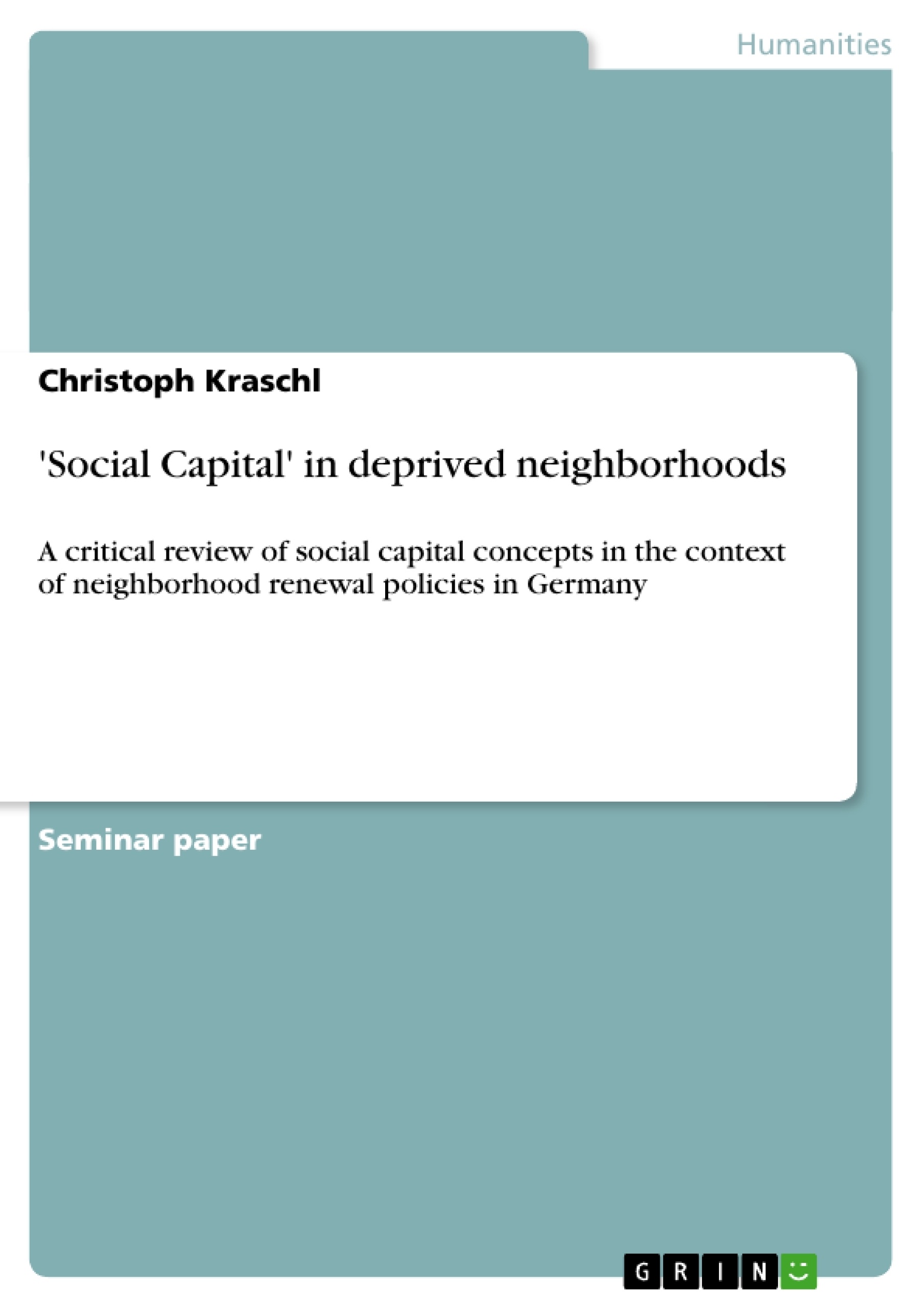In this article concepts of social capital in the context of social policies are discussed which focus on neighborhood renewal. First, theories of social capital are illuminated by comparing the concepts of Putnam, Bourdieu and Granovetter. Second, by the example of the German program “Socially Integrative City” (SIC), a recent nationwide strategy (aimed at revitalizing deprived neighborhoods) is analyzed. Which of the aforementioned concepts of social capital (or concept-elements) are implemented in the SIC-initiative? For answering this question key documents that outline the aforementioned policies are reviewed. Policies and objectives of the SIC-initiative which can be related to the three depicted approaches to social capital are identified. In the framework of this analysis there is particular consideration of the ‘sub-concepts’ of social capital: bonding, bridging and linking. With this the author reveals which kinds of social relationships between people and different population-groups are planned to be established. In this context the function of social capital is particularly considered.
Finally, after the discussion of recent critiques on social capital theories, these are evaluated with regard to their usefulness for social policies in deprived urban areas.
Inhaltsverzeichnis (Table of Contents)
- Introduction
- Three approaches to social capital
- Putnam
- Bourdieu
- Granovetter
- Neighborhood renewal policies in Germany: The “Socially Integrative City”-Initiative
- Which policies of the SIC-initiative can be related to 'social capital'?
- Which concepts of social capital are implemented in the SIC-guidelines?
- Critiques on social capital theories
- Conclusions
Zielsetzung und Themenschwerpunkte (Objectives and Key Themes)
This paper examines social capital concepts within the context of German neighborhood renewal policies. It compares the theories of Putnam, Bourdieu, and Granovetter, analyzing how these concepts are implemented (intentionally or not) in Germany's "Socially Integrative City" (SIC) initiative. The study aims to identify SIC policies relatable to the three social capital approaches, focusing on bonding, bridging, and linking social capital and their functions. Finally, it evaluates critiques of social capital theories regarding their usefulness in deprived urban areas.
- Social capital theories of Putnam, Bourdieu, and Granovetter
- Analysis of the "Socially Integrative City" initiative in Germany
- The role of bonding, bridging, and linking social capital in neighborhood renewal
- Critiques of social capital theories
- The applicability of social capital theories to social policies in deprived urban areas
Zusammenfassung der Kapitel (Chapter Summaries)
The Introduction sets the stage, outlining the paper's objective to analyze social capital concepts within the context of German neighborhood renewal policies, specifically the "Socially Integrative City" initiative. The section on Three approaches to social capital introduces the theoretical frameworks of Putnam, Bourdieu, and Granovetter, highlighting their definitions and key differences regarding social capital and its components. The chapter on Neighborhood renewal policies in Germany: The “Socially Integrative City”-Initiative will discuss the policies within the SIC initiative.
Schlüsselwörter (Keywords)
Social capital, neighborhood renewal, Germany, Socially Integrative City (SIC) initiative, Putnam, Bourdieu, Granovetter, bonding social capital, bridging social capital, linking social capital, urban deprivation, social policy.
- Arbeit zitieren
- Christoph Kraschl (Autor:in), 2008, 'Social Capital' in deprived neighborhoods, München, GRIN Verlag, https://www.grin.com/document/120521



